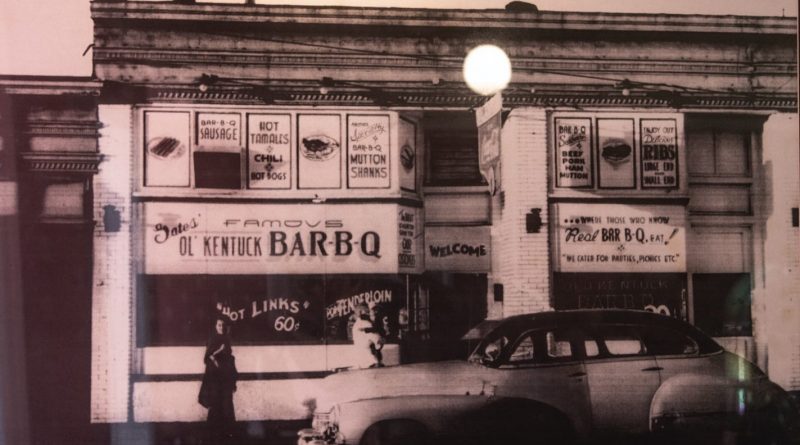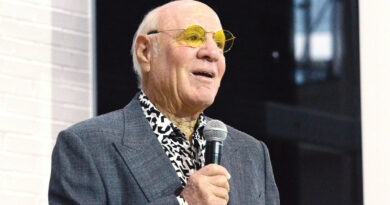How to visit Green Book sites where Black travelers once found refuge
For Black drivers during the Jim Crow era, taking a road trip was dangerous and complicated. That’s why the Negro Motorist Green Book, which listed restaurants, hotels and other businesses that welcomed African Americans, became known as the “bible of Black travel.”
Published from 1936 to 1967, the guides included more than 10,000 sites, but only about 3% still stand, says Candacy Taylor, author of “Overground Railroad.” And it’s important to visit them, she says. “It’s a chance to celebrate that they’ve survived. Reliving history through space is a really powerful way to gain understanding.”
The New York Public Library has digitized the guides, and Taylor’s book has inspired a traveling Smithsonian exhibit, displayed at the National Civil Rights Museum in Memphis, Tennessee, through March 1 and then at the Mosaic Templars Cultural Center in Little Rock, Arkansas.
Taylor shares some notable Green Book sites with USA TODAY.
Trains made the Great Migration possible: They remain a connection for Black Americans.
Dooky Chase’s Restaurant, New Orleans
Taylor calls this New Orleans eatery the nation’s first Black-owned fine-dining restaurant. It has served presidents and celebrities and is legendary for its gumbo and shrimp creole. “It’s an iconic place,” says the author, who interviewed the late Leah Chase, who ran the restaurant with her husband. She later appeared in a Beyoncé video and was the inspiration for Princess Tiana in the Disney animated film, The Princess and the Frog.
More info: dookychaserestaurants.com
‘Princess and the Frog’ ride theme: Disney’s Splash Mountain to get new theme amid calls to ditch racist history
Gates Bar-B-Q (formerly Gates Ol’ Kentucky), Kansas City, Missouri
This mid-continent barbecue shop was one of the few restaurant chains in the Green Book, with multiple listings across the city. Founded by a railroad worker who was seeking the stability of owning his own business, it was known for its spicy tomato and molasses-based barbecue sauce. Now it’s one of the city’s leading purveyors. “It speaks to the importance of Black entrepreneurship,” Taylor says.
More info: gatesbbq.com
Hampton House, Miami
Now a cultural center, this former motel played an important role during the civil rights movement. It’s where Martin Luther King Jr. delivered an early version of his “I Have a Dream” speech, and where Malcolm X proselytized to boxer Cassius Clay, who soon changed his name to Muhammad Ali. The meeting and hotel are featured in a play and the new film, “One Night in Miami.” “Really important things happened here,” Taylor says.
More info: historichamptonhouse.org
The Paramount Theater, Charlottesville, Virginia
This once-segregated auditorium was one of about 50 theaters included in the Green Book. Today the restored 1931 building is a landmark on the college town’s downtown pedestrian mall. Tours visit the historic Black entrance and segregated balcony, but check the website for COVID-19 updates.
More info: theparamount.net
Pierre Hotel, New York
Not every Green Book location was tucked away. This luxury hotel near Central Park was frequented by Marilyn Monroe and countless other celebrities. “Most people assume the Green Book had these downtrodden places,” Taylor says. “This is an example of the highest end.”
More info: tajhotels.com/en-in/taj/the-pierre-new-york
Crater Lake Lodge, Crater Lake National Park, Oregon
The national parks have not always been eager to welcome Black travelers, Taylor says. But in 1952, the Green Book began promoting the areas, which represented an important switch for Black travelers. “It was recreation; it was true vacation,” she says. The lodge at Crater Lake National Park is particularly notable because Oregon began as a “whites-only state.”
More info: travelcraterlake.com
R&R Liquors, Nashville, Tennessee
This Black-owned package store is well-known in Nashville due to its mid-century modern neon sign. The landmark blew down in a storm, but the store plans to put it back up. The building was designed by noted Black architect L. Quincy Jackson.
More info: visitmusiccity.com
Hotel Copper Queen, Bisbee, Arizona
Discrimination wasn’t just limited to the Deep South, Taylor says. “Most people assume the West was so liberated, and it really wasn’t.” This historic hotel in a former mining town was a haven for African Americans.
More info: copperqueen.com
Rossonian Lounge, Denver
Located in the Five Points neighborhood, this former jazz nightclub welcomed musicians who would stop in Denver on their way out West. Guests included Duke Ellington, Billie Holiday and Cab Calloway. Now under renovation, its distinctive architecture resembles New York’s Flatiron Building, Taylor says. “We almost lost it many times.”
More info: denverarchitecture.org/site/rossonian-hotel
Clifton’s Republic (formerly Clifton’s Cafeteria), Los Angeles
Located near the end of Route 66, this downtown cafeteria was run by a white man who was a former missionary and believed in welcoming all customers. Regulars included Walt Disney and science fiction writer Ray Bradbury. “It was a really important place,” Taylor says. Now called Clifton’s Republic, it’s temporarily closed due to COVID-19.
More info: theneverlands.com/cliftons-republic
‘Green Book’ tourism: Oscar-nominated film inspires travelers to retrace original route
Movie review: Superbly acted ‘Green Book’ makes its case for being a new holiday classic
Source: Read Full Article



